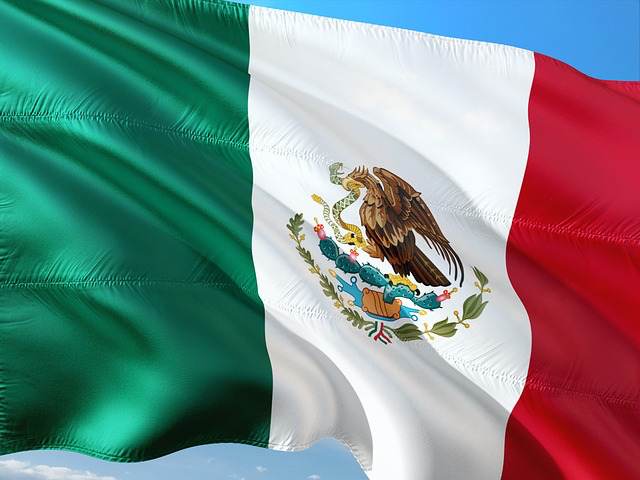Mexico shows intent with $250m catastrophe insurance renewal

In a positive signal for the continuing use of private insurance and reinsurance capital to support the country’s natural disaster and catastrophe insurance needs, the Mexican government has renewed a $250 million layer of traditional catastrophe protection.
As part of the government’s economic plans for 2023, the Mexico Ministry of Finance and Public Credit explained that catastrophe insurance with a coverage limit of 5,000 million Pesos was renewed.
So, that’s approximately US $250 million of disaster insurance protection which the Mexican government will now have in-force through 2023, as it continues to make use of risk transfer as a financial tool for securing post-disaster capital to aid in recovery and reconstruction.
Disaster insurance is seen as a financial shield for the economy and population of Mexico by its government, as the country recognises the value of additional capital inflows when the worst disasters strike.
It’s a shield for public finances, meaning those are not derailed after every disaster and used for recovery, with dedicated financial mechanisms that pay-out on disaster occurrence.
The disaster insurance runs from July 5th each year, so this renewal happened a little while ago, but has only recently come to light in government filings from the Ministry of Finance and Public Credit.
There is a deductible in-force for the catastrophe insurance arrangement, of roughly US $13.5 million per-event and on an aggregate basis around US $35 million per year, maximum, we understand.
The catastrophe insurance has been designed to work alongside Mexico’s catastrophe bond coverage, which is a long-running source of additional disaster protection sources through work with the World Bank, global reinsurance firms, and backed by capital market investors from the insurance-linked securities (ILS) market.
Mexico’s Ministry of Finance and Public Credit explained in its economic plan, “Mexico has experience and a solid institutional structure in terms of risk transfer to both national and foreign specialised markets.
“Public finances in the 2023 financial year will have a robust protection strategy in terms of catastrophic risks: the insurance to deal with damage caused by natural phenomena (catastrophe insurance) and the catastrophe bonds.”
Mexico has been accessing the capital markets for disaster insurance and reinsurance protection using catastrophe bonds since 2006.
The country has benefited from catastrophe bond protection with the help of the World Bank since as far back as 2006 with its groundbreaking CAT-Mex Ltd. transaction.
Mexico has repeatedly renewed its coverage from the capital markets through a continuing series of World Bank supported cat bond arrangements.
These included the MultiCat Mexico 2009 Ltd. and MultiCat Mexico Ltd. (Series 2012-1) cat bonds, after which the program shifted to use the World Bank’s IBRD capital-at-risk notes issuance platform, with the IBRD / FONDEN 2017 transaction.
Mexico then participated in the Pacific Alliance issuance with the IBRD CAR 118-119 deal in 2018, and most recently came back to the ILS market with its largest catastrophe bond, the $485 million IBRD / FONDEN 2020 cat bond in March 2020 which is still in-force today.
In each case, the beneficiary of the disaster insurance provided by catastrophe bonds was Mexico’s natural disaster fund, FONDEN.
As we previously reported though, FONDEN is no more and the beneficiary of Mexico’s disaster insurance, both in traditional and catastrophe bond form, is now the Treasury or Office for the Treasury and Public Credit (so within the Ministry of Finance entities).
The most recent World Bank IBRD issued FONDEN 2020 catastrophe bond remains on-risk until March 2024, but there had been some uncertainty over Mexico’s desire to continue with the program at the time of the change in beneficiary and shuttering of FONDEN.
So, this renewal of traditional catastrophe insurance is seen as a strong sign of the Mexican government’s intent to continue leveraging insurance and risk transfer to protect its public finances against natural disasters and catastrophe events, which bodes well for the catastrophe bond program to continue as well.
Mexico is also planning ahead, with a stated desire to update its catastrophe modelling over the next year, with updated tools expected to be used and so new data to inform its disaster risk management and risk transfer assumptions and planning.
That could be very important before any planned renewal of the Mexico World Bank catastrophe bond for 2024 and use of modern risk modelling tools will certainly help the country better plan its capacity needs and perhaps gain investor support for any cat bond renewal.
It underlines the commitment to disaster risk financing within Mexico’s government, suggesting the capital markets role in these arrangements is likely to continue as well.
There are some concerns over the shuttering of FONDEN though, as now the Mexican government has to budget each year for disaster response and recovery financing, as well as insurance. Before, it was via the disaster fund, which was seen as less likely to be derailed should other economic priorities come up.
Finally, it’s likely the cost of Mexico’s disaster insurance was higher at this latest renewal as well, given the hardening of global property catastrophe insurance and reinsurance markets. So again it is encouraging to see the continued use of insurance in the country, as a further signal that the motivation to protect its people hasn’t changed since the closing down of the FONDEN disaster fund.



